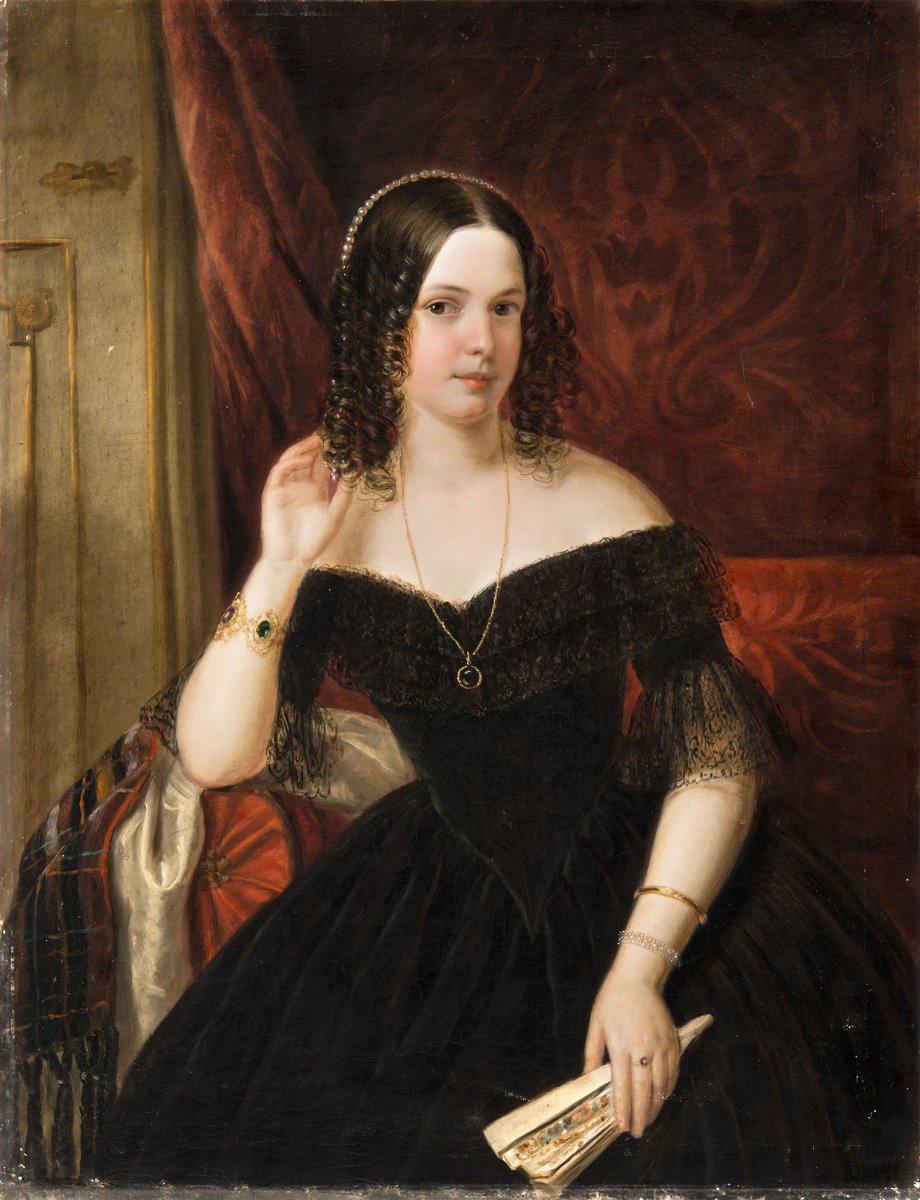
Portrait of a Woman
Collection of Paintings
| Artist | |
|---|---|
| Date | 1856 |
| Object type | painting |
| Medium, technique | oil, canvas |
| Dimensions | image: 127 × 159 cm |
| Inventory number | 2762 |
| Collection | Collection of Paintings |
| On view | This artwork is not on display |
Miklós Barabás, one of the most outstanding Hungarian artists in the first half of the nineteenth century, owed his great popularity to his portraits and genre scenes in classicizing romantic style. Though the bulk of his oeuvre consists of portraits, he had a great role in spreading rural genre scenes in Hungary. Barabás was commissioned by the Art Society of Pest in 1855 to paint a multi-figural rural genre scene. The theme was chosen by the painter himself, the choice was prompted by the popularity of depicting weddings in Hungarian painting. The model for The Arrival of the Daughter-in-Law is Ferdinand Georg Waldmüller’s (1793―1865) Wedding at Perchtoldsdorf. Just like Waldmüller’s, Barabás’s composition is like a scene on a stage. Theatricality is enhanced by the rigidity of gestures, the clumsy dancing movement, and the naiveté of the artist’s approach. They appear on the nosegay pinned to the suit of the best man dancing on the left of the picture and on the ribbons fluttering from the stick in his hand, as well as on the clothes of the bride and bridegroom next to her. Despite all its awkwardness the picture had great success. | Zsuzsanna Bakó
This record is subject to revision due to ongoing research.